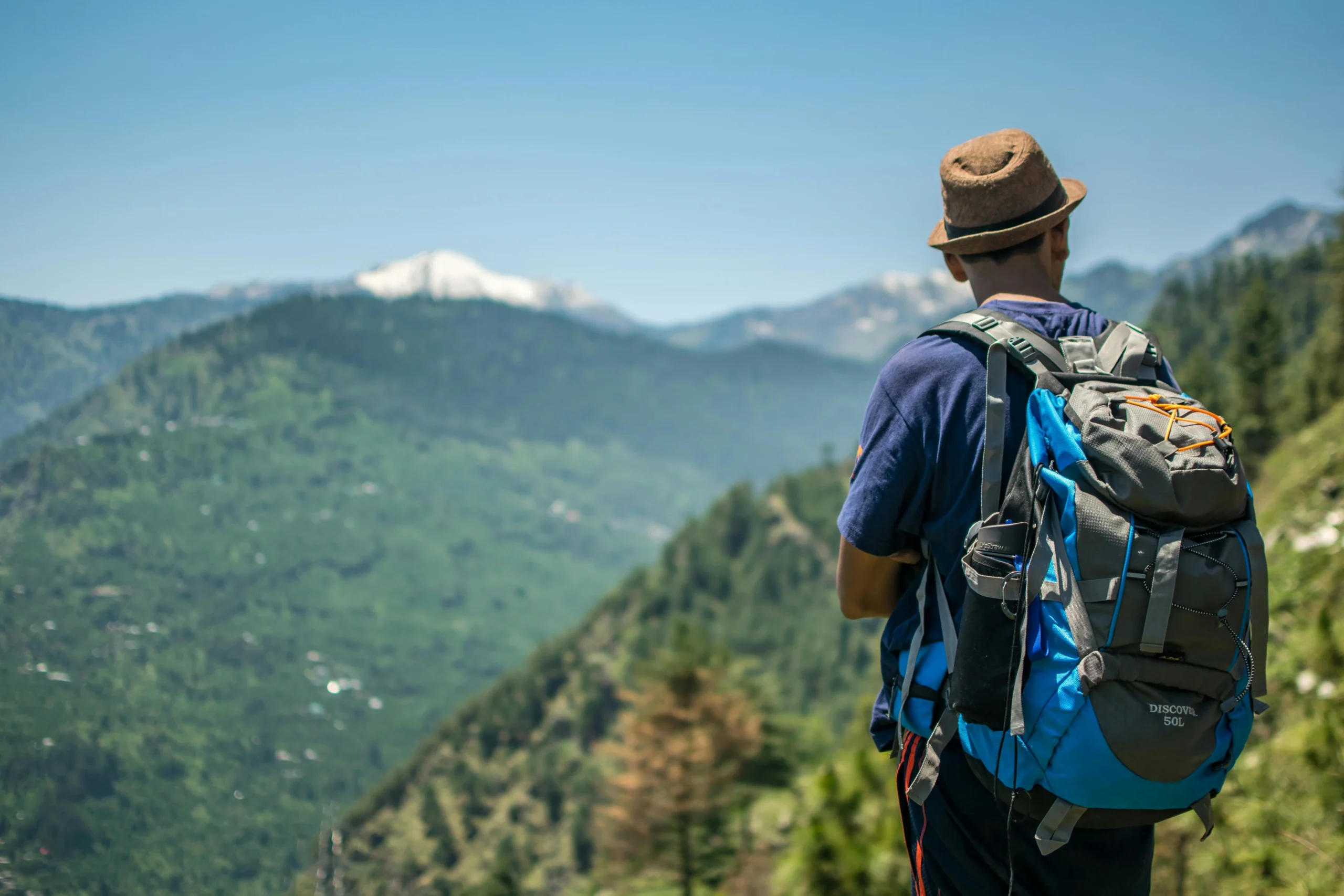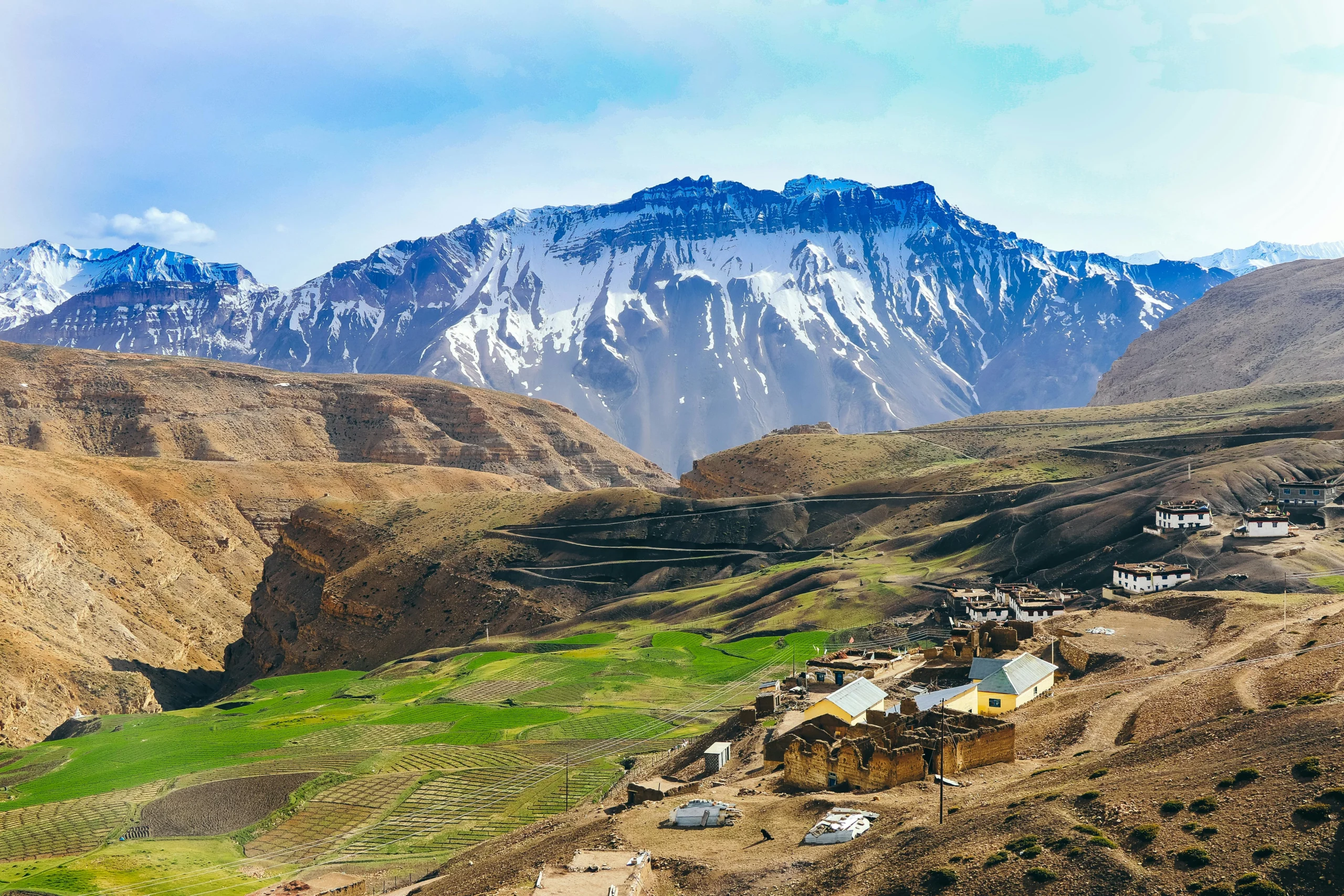A Snowy Slice of the Himalayas
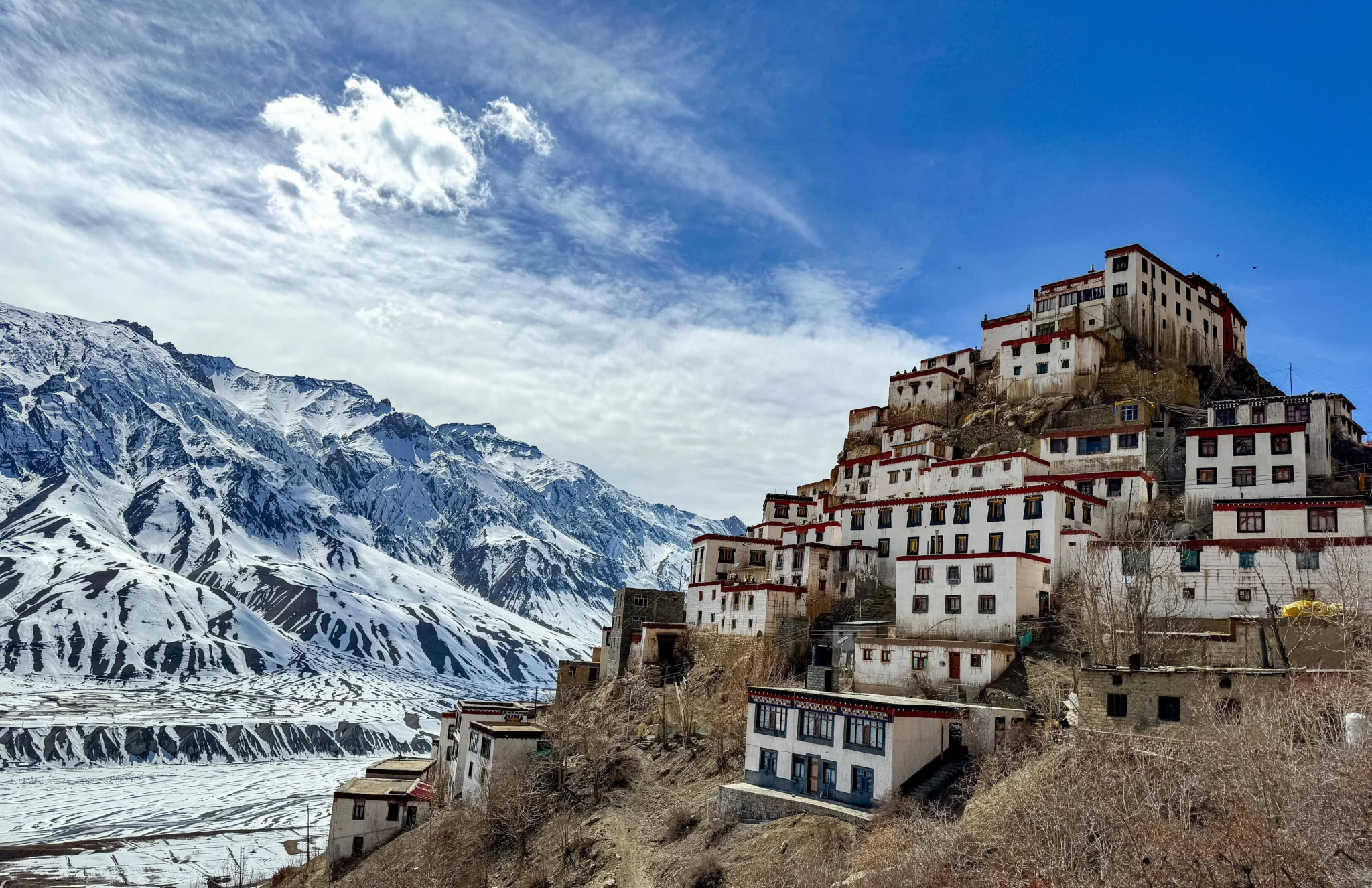
There is something magical & mystical about Spiti Valley, as in winter the snow covered desert feels like another planet. If you’ve only seen Spiti in the summer, you’ve only seen half the story. A winter trip to Spiti Valley reveals a raw, untouched beauty that’s hard to describe in words. The roads are quieter, the villages are calmer, and the entire valley is wrapped in white silence.
Winter in Spiti is not just a season, it is landscapes Painted in White and Shadows. A breathtaking views, where the silence hums louder than words and wind sculpts the soul, winter is a kind of magic few dare to seek. But for those who do, it is unforgettable.
“Quote”
“Travelling it leaves you speechless, then turns you into a storyteller.” Ibn Battuta
While most travelers do not prefer Spiti valley in winter due to the biting cold weather, those who venture into these frozen pathways are rewarded with some spectacular views which cannot be compared to any other expedition. The mountains are like guardians, in this valley which are showered by snow & as the sun rises the crystal of snow crown jewel on peak of mountains.
What Makes Winter in Spiti So Special?
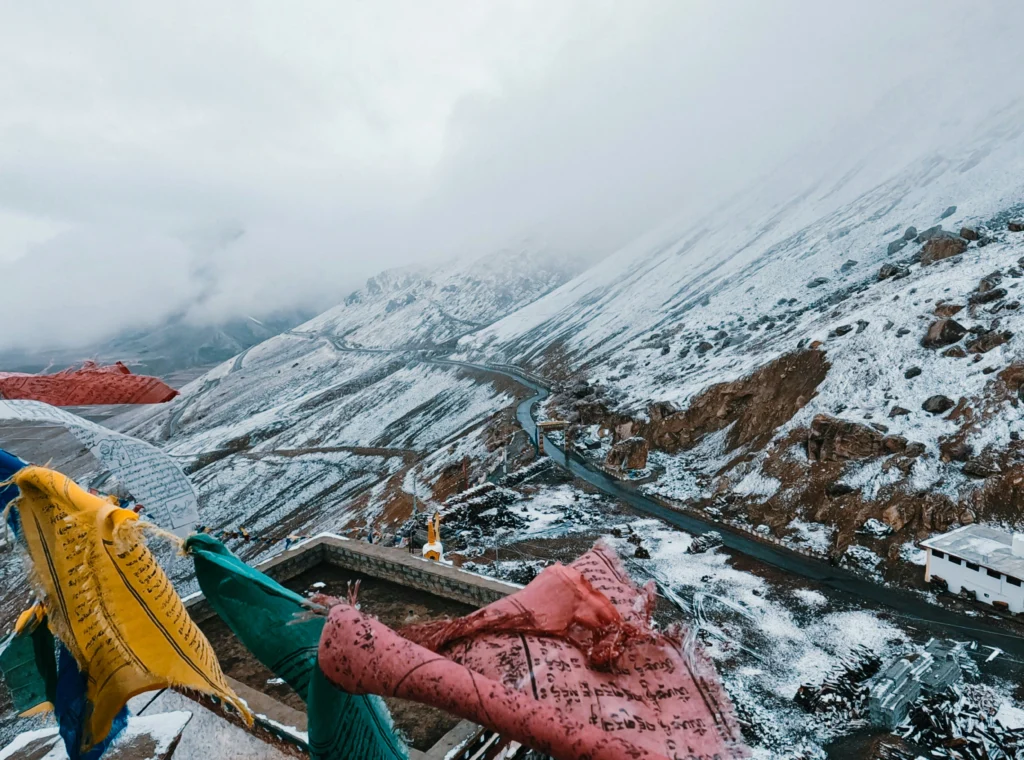
Spiti in winter is not any average tourist escape. It’s for those who want to go off the grid, explore something isolated and truly experience the harsh & yet beautiful Himalayan winter season. Temperatures in spiti valley can dip below -20°C at night, so to adjust your body & keep yourself energetic the warmth of local hospitality, wood-fire camps & kitchens, with the endless cups of butter tea keep you cozy & ready for your next adventure.
Some unique highlights for this Expedition
- Snow covered monasteries (a place where monks live together) like Key, Tabo, and Dhankar look like scenes from a fairytale or movie scene.
- The completely frozen waterfalls & ice rivers which are great for photography
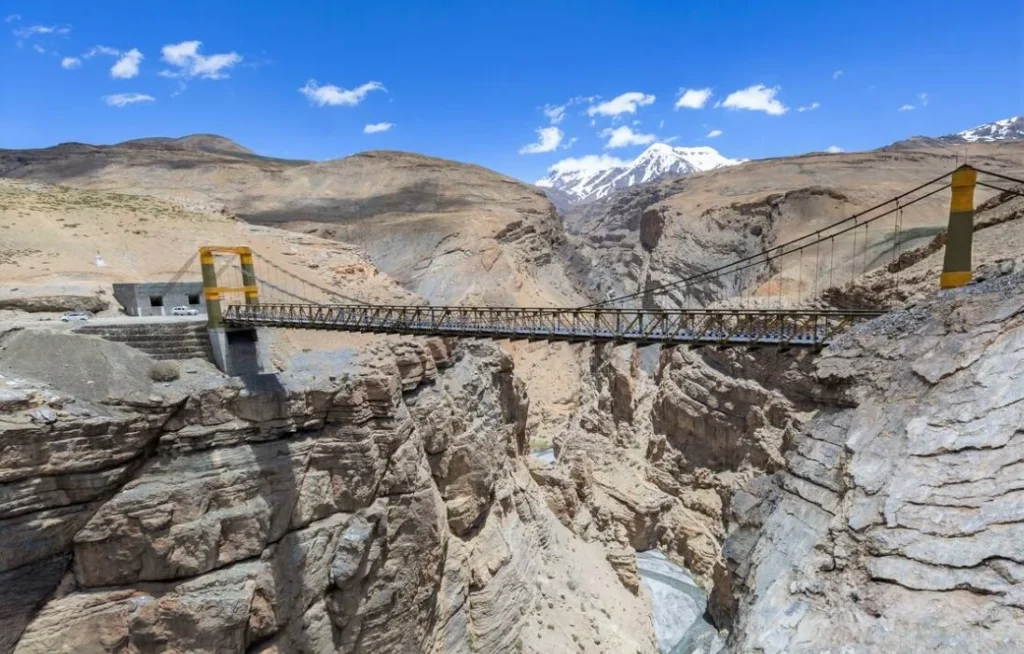
The Chicham Bridge, one of Asia’s highest suspension bridges, offers stunning views blanketed in snow. At an impressive 13,596 feet (4,150 meters) above sea level. It’s a marvel of engineering connecting Chicham village to Kibber in the Spiti Valley.
Before the bridge was built, locals had to rely on a manually operated cable trolley to get to the other side. It was a dangerous and time consuming task of 1 hour especially in winters when snowfall is on peak, which now takes only 10 minutes, thanks to Border Roads Organization (BRO). Chicham Bridge in made in 2017 after nearly 15 years of planning and construction, the Chicham Bridge now allows safer & faster travel while offering jaw dropping views of the rugged Spiti valley terrain.
Crossing Chicham Bridge is more than just a moment of thrill. The feeling of stepping into another world where remote villages like Chicham and Kibber sits quietly among the mountain valleys. The bridge is not just a photo stop but it’s a symbol of how people have adapted them to live in one of the toughest terrain places in India. If you’re visiting Spiti valley in winter, make sure to stop here & take your time to look at the delightful view.
Where Is Spiti Valley?
Spiti Valley is located in the Lahaul and Spiti district of Himachal Pradesh, between Tibet and Ladakh, also called “Little Tibet”. The name “Spiti” actually means “The Middle Land,” symbolizing its position between India and Tibet.
A Bit of Spiti’s History
Historically, Spiti valley has been a gateway for Buddhist culture and learning. The Tabo Monastery, founded in 996 AD, is one of the oldest functioning Buddhist monasteries in the world. This shows the importance of this place for Tibetan culture. The entire valley has been shaped by centuries of Tibetan Buddhist influence, which you can still feel in the chants, prayer wheels, and simple mountain life.
The Journey Begins: Into the White Silence
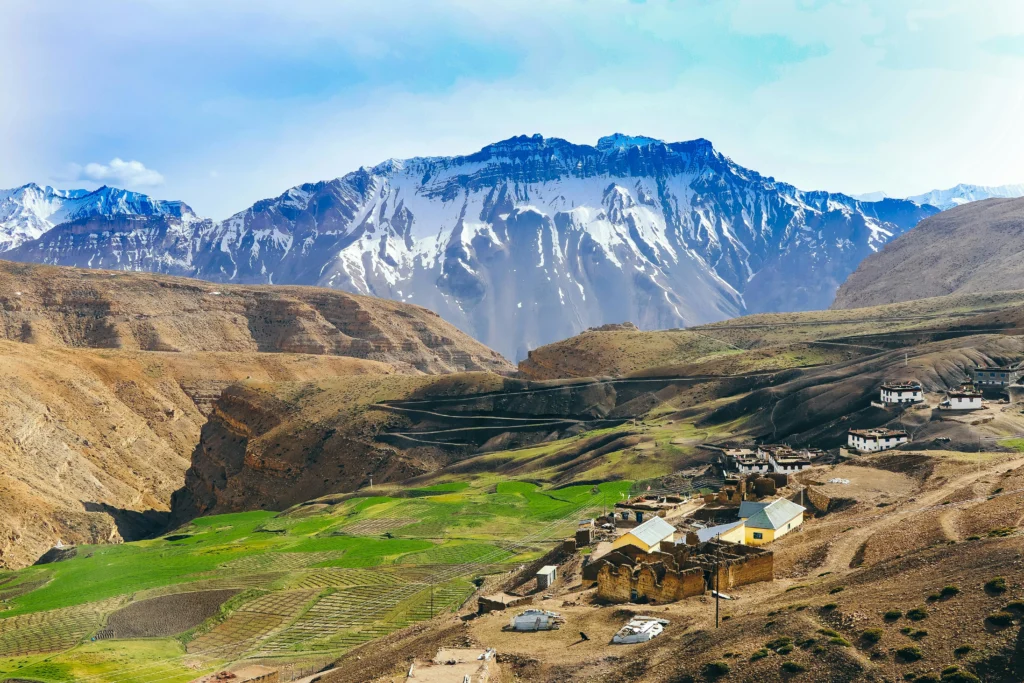
The Spiti valley is entirely covered with powdery snow, with silent witnesses to centuries of Himalayan winters. The roads to Spiti are not gentle lovers in the cold; they demand more from you. You begin your journey from Shimla, winding through Narkanda, Reckong Peo, and eventually rising toward the high and haunting Kinnaur valley.
The Tarmac completely disappears under layers of snow and ice, the trees stand in rigid formation, as the chill air curls into your bones. But within this trial lies the thrill. Each mile covered feels earned something. As the altitude rises, the oxygen level decreases which shortens breath.
- Every view is a painting. Every silence, a lesson.
Encounters with Stillness: Life in a Himalayan Winter
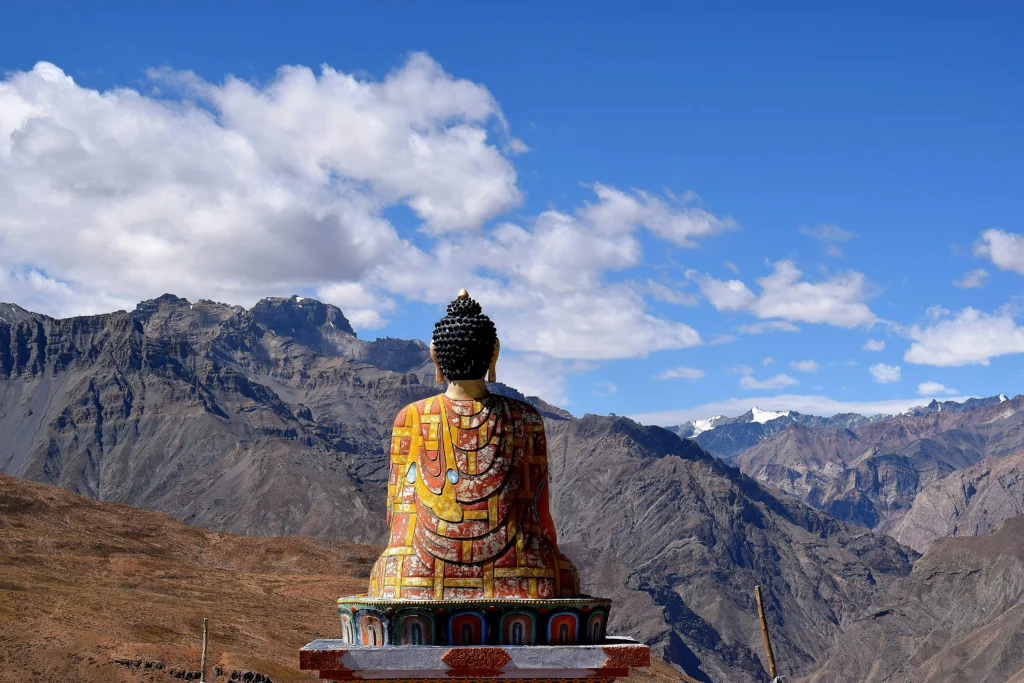
In villages like Kibber, Komic, and Langza, life does not stop here for the snow. As nature becomes harsh people adapt themselves, Inside thick walled homes, families gather around bukharis (traditional space wood heater), with a cup of butter tea. Small Childrens here play in snow, while women mold cow dung cakes for fuel, a thousand year old ritual of survival seen in many Mountains & cold valleys.
There is beauty in this simplicity. A rhythm that feels truer than the ticking of clocks. Here, connection is not through Wi-Fi but through eyes, hands, and shared breaths. It humbles you. It holds you. Something changes within you when you witness a landscape this raw, You begin to recognize the difference between loneliness and solitude. Between silence and peace. The Spiti winter doesn’t hand you comfort, it offers revelation. You learn how little you truly need. How rich stillness can feel.
“Quote”
"All journeys have secret destinations of which the traveller is unaware" Martin Buber
- After a long day, dinner and rest at your hotel
Things to Know Before You Go
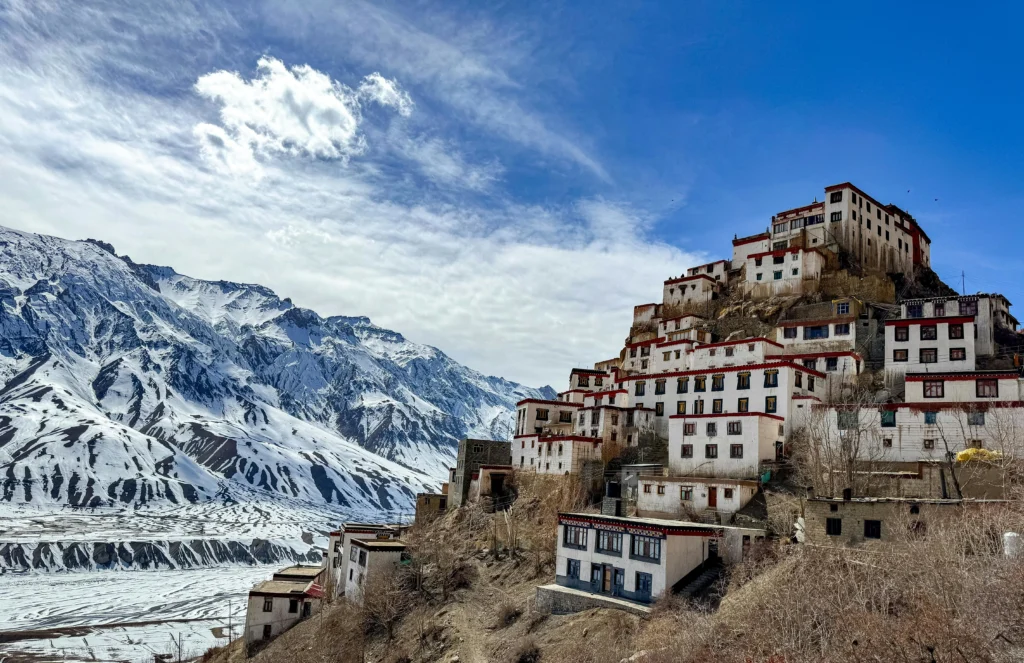



Why People Love It
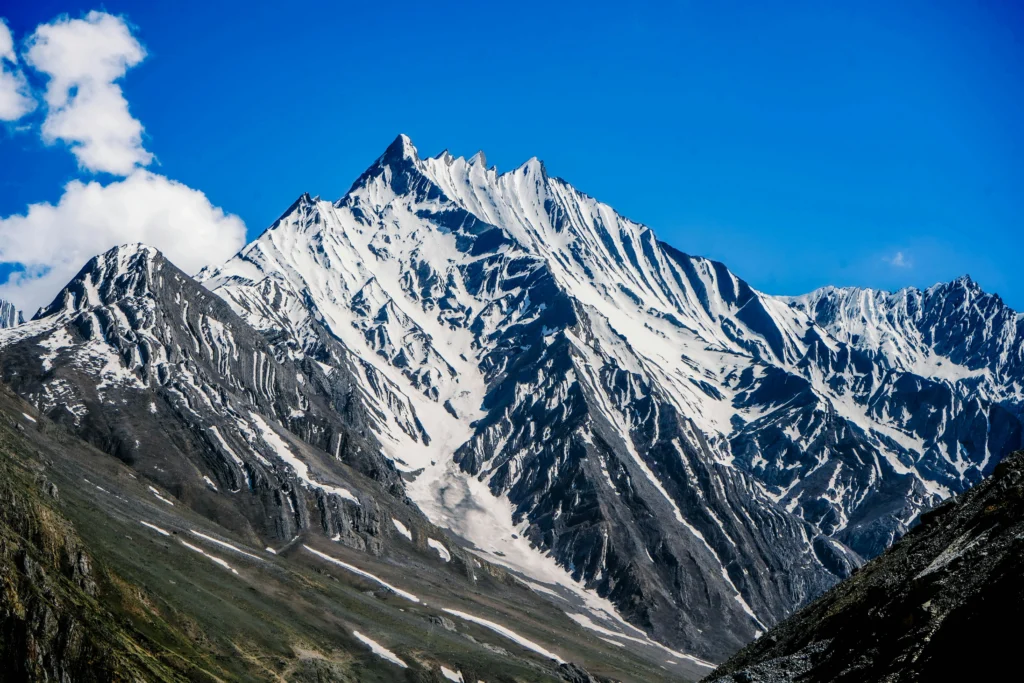
It’s not about doing a long checklist. It’s about sitting by the window in a mud house while snow falls outside. It’s about helping your host collect firewood or learning how they survive without supermarkets. It’s quiet, real, and unforgettable.
- Spiti in winter isn’t just a trip, it’s a story you’ll keep telling.
F.A.Q.
Spiti Valley Trek
Yes, but you need to travel via Shimla roads, as the Manali route is closed during the winter season due to heavy snowfall in the Valley. Most of travelers access Spiti via Narkanda, Kalpa, and Kinnaur town. The Shimla route is filled with incredible scenery and is safe to travel.
Spiti Valley can get extremely cold in winter with the temperatures drop below -20°C, especially at night in places like Kibber, Komic, and Langza. As Warm clothes, insulated boots, and thermal layers are a must to carry while traveling to spiti valley in winter.
Yes, many adventurers prefer Spiti in December and January due to snow covered beautiful landscapes & scenes. However, it’s only recommended for experienced travelers & trekkers or those prepared for somewhat hard trekking conditions with limited facilities.
- The Key Monastery in spiti valley looks like a snow-covered castles.
- Tabo Monastery is one of the oldest Buddhist monasteries in the world
- Chicham Bridge highest suspension bridge in Asia
- Kibber, Komic, and Langza are quiet villages with stunning Himalayan views
- Frozen rivers and waterfalls are perfect for unique photographs
Yes, but it requires some preparations. The Roads can be blocked by snow, and sometimes there is no mobile network in many areas. Choose a trusted tour operator and stay in local homestays in Spiti for better support from locals & warmth.
It usually takes 2 to 3 days to reach Spiti Valley from Shimla via Reckong Peo, depending on road conditions & Atmosphere. In winter due to snow covering on roads, it takes more time, but the views are absolutely worth it.
There are less chances of connectivity & as BSNL works in a few villages like Kaza, but don’t expect a 4G or high-speed internet. It’s a great digital detox experience.
In winter, homestays in Spiti are the best options to saty, as they offer warm hospitality & home cooked food, with a real chance to experience mountain life. Most hotels remain closed in extreme cold.
- Heavy winter jackets
- Thermals and woolen layers
- Good quality gloves, socks, and boots
- Moisturizer, lip balm, sunglasses
- Power bank and a refillable water bottle
Because it’s a pure magic experience with no crowds, untouched snow, with a deep sense of peace. It’s not a tourist destination in winter but a personal experience, a unique kind of adventure.

